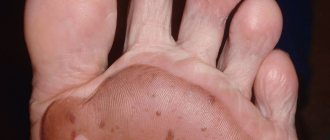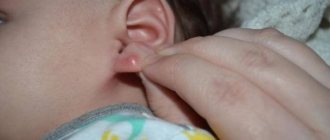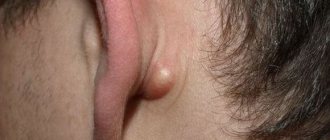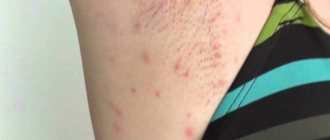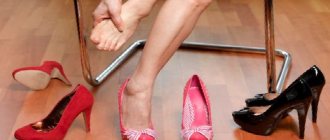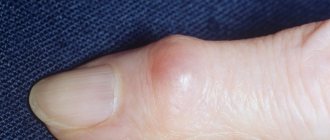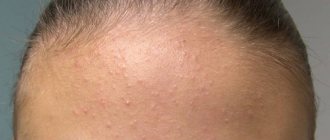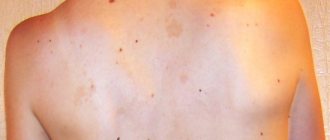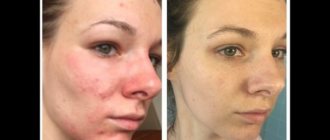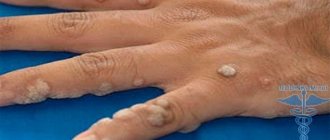What you need to know about calluses
Any callus is a plaque of roughened and keratinized skin. The formation of seals is associated with the natural protection of the delicate tissues of the foot from excessive pressure and friction. There are dry and wet calluses. Dry calluses form on the toes, often on the little toe, where shoe friction is noticeable. Sometimes the formation occurs on the sole or heel, causing pain with every step.
A soft callus on the heel looks like a painful blister, often large. They mainly form between the toes, but can also appear on the soles of the feet. In the latter case, calluses can cause pain, sometimes significant.
Callus on the lower limb
Types of dry calluses
Dry calluses are usually divided into several types:
- Directly dry calluses. They are a thickened area of the skin, which is characterized by a yellowish tint (less often grayish).
- Corns. This is a large area of keratinized skin that does not have clear boundaries and is located exclusively on the sole of the feet.
- Core calluses. Mainly formed in the area between the toes or feet. A distinctive feature is a centrally located hole, inside of which there is a recessed callus core. Over time, it can lead to severe pain and cracks.
Regardless of the type of dry callus, it is necessary to promptly monitor its manifestations and promptly treat it.
What calluses are painful?
There are several types of painful calluses:
- Plantar. They look like a yellowish lump on the sole or heel. They are formed from excessive friction of the foot and heel area on shoes while walking or running. Severe pain occurs while walking.
- Water calluses on the heel cause a lot of trouble. They look like a bubble filled with liquid. When pressing on the walls (occurs while walking), the callus begins to hurt very much.
- The callus becomes extremely painful. Forms on the bone tissue of the heel. Every step causes sharp pain. The formations are treated surgically.
- Calluses forming on the big toe. Pain often occurs with pressing movement, if you step on a sore callus.
Treatment in the clinic depending on the type of callus
If home therapy does not produce results, then you can consult a doctor to eliminate painful tumors. He will tell you what to do if calluses on your feet hurt, and what methods will help you remove them most quickly and effectively. Treatment will vary depending on the type of growth.
- It is recommended to treat wet calluses at home, but if the growth is of such a size that it is simply impossible to step on the sore callus, then you can consult a doctor. He will open the blister and drain the exudate (fluid inside the callus). Next, only home care is important to prevent infections.
Needling calluses - It is advisable to remove dry calluses with a stem only from a specialist, since it will not be possible to completely remove the stem on your own. This type of growth can be cured by drilling with a special cutter of suitable size, after which antiseptic drugs are instilled into the resulting wound. Laser therapy is also carried out, in which damaged tissues are burned out, and no trace of the sore remains in this place. Cryotherapy - freezing the diseased area of the epidermis with nitrogen - is also carried out under the supervision of a doctor in specialized clinics.
- You can try to remove corns with a high-quality hardware pedicure. In advanced cases, when the corns are very painful, they are removed in medical institutions. The same methods are used as for eliminating dry calluses.
- Bunions and bone spurs are removed by excision of the diseased areas or using a laser.
Why does a corn hurt?
Severe pain in the affected area of the skin occurs when an inflammatory process occurs. The sensations are explained by the reason: pathogenic microorganisms that cause inflammation have entered the wet blister or dry callus with a core. As a rule, the callus swells and acquires sharply defined edges, sometimes reddened. Often a person feels an increase in local temperature.
Then a dry callus with a stick on the heel begins to put pressure on the nerve endings. Pressure causes extremely severe pain. The constant pressure of rough and keratinized skin on the soft tissues of the foot and heel can cause severe pain.
Let's talk separately about infected calluses. The pain in them causes an intense inflammatory process. The skin around the callus swells and edema develops. The addition of a purulent infection only aggravates the course of the disease process.
Swelling from callus
Treatment of dry calluses
For people who are interested in the why of callus tightening, it will be useful to know not only that this is a classic phenomenon with exercise, but also how to relieve callus pain and cure dry callus.
For anyone interested in how to remove this type of callus, the following sequence is suitable:
- steam the foot in a hot bath, soften hardened areas of the skin;
- it is permissible to use calendula and chamomile for an antiseptic effect;
- the corns are rubbed with pumice to remove keratinized particles;
- moisturizer and healing agents are applied to damaged skin;
- Socks are worn to keep the feet warm.
After this, it is recommended to take a lying position and prepare for the problem of whether the callus can hurt.
Symptoms of a sore callus
As a rule, such a callus is characterized by severe pain. Induces pain with any careless movement or with excessive stress. Pain forces a person to limit physical activity and make adjustments to daily activities, especially if the leg is swollen.
In severe cases, when the inflammatory process is characterized by extreme intensity, signs of general intoxication may appear:
- Increase in temperature to subfebrile levels;
- General weakness, drowsiness;
- Severe hyperemia of the affected skin areas;
- Inability to make active movements in the affected part of the limb.
An infected callus requires immediate treatment.
What not to do
Horny growths cannot be cut off with a sharp blade, knife or scissors.
Such a procedure can cause infection and the formation of an inflammatory process.
You cannot remove a water blister yourself, this will only aggravate the problem, since such a blister is a kind of protection of the subcutaneous layer at the site of friction; removing it will inevitably cause painful irritation of the exposed layer.
If you have painful burst water calluses, you should not lubricate them with brilliant green or iodine , since these products can cause burns on delicate skin that is devoid of the top layer; in addition, both brilliant green and iodine dry out the skin, and this can cause the formation of cracks, which will certainly cause even more painful Feel.
When is surgical treatment required?
In some cases, the painful process goes so far that surgery is used for treatment. True, such cases are rare; doctors are faced with precedents mainly due to patients’ independent attempts to cure a callus and unintentional infection. Sometimes the doctor treats the underlying disease (flat feet or polyarthritis). Surgery in such cases gives the most effective results and helps prevent relapses of the disease.
Remember, if an infected callus on the heel is not treated, the formation will help the infection to further penetrate deeper into the tissue. In advanced cases, there is a high risk of developing gangrene and other complications that limit movement.
What to do if you urgently need to get rid of pain
- Treat the callus with hydrogen peroxide, disinfect the needle, and then carefully pierce the vial with liquid from the edge,
- Using a cotton pad pre-moistened with an antibacterial agent, gently press the bottle and remove excess liquid,
- Wipe the freshly deflated bottle again with a new cotton pad containing peroxide,
- Remove excess liquid
- Treat the callus with brilliant green or another “drying agent” (it will hurt a little),
- If there are special ointments or creams for the treatment of corns, apply the product according to the instructions for the drug,
- Cover the treated area with a bactericidal adhesive plaster so as to prevent infection,
- If you need to go out, use the loosest shoes possible (ideally with an open heel) to avoid rubbing the damaged area again and to ensure the flow of oxygen.
How to Reduce Corn Pain
Remember, if calluses occur due to diabetes, you need to consult your doctor. Independent fight against formations of this terrible disease acquires extremely unpleasant consequences. If the formation of calluses is associated with flat feet, the treatment will be completely different, depending on the specific case.
The following tips will help reduce the discomfort of calluses. Try to use the wishes if a lot of formations appear on the skin of your feet:
- First aid for calluses is to eliminate the causes that caused them. You may need to change your shoes. Careful foot hygiene periodically helps to thoroughly get rid of skin defects.
- Nails need to be trimmed properly. Make sure that the nail plate remains straight after trimming. Otherwise, there is a high risk of developing a painful callus or ingrown nail. Pathology threatens with increased pain.
- Calluses require steaming. After steaming, it is advisable to treat the affected area of skin with a moisturizer.
- Acute pain can be relieved by ice. It works well when, due to calluses, it is impossible to even wear the usual type of shoes.
- Cutting the callus leads to increased pain. With such a procedure, there is a high risk of infection in the wound.
- If you have painful calluses on your finger, try to take gentle steps.
- Use special anti-callus pads. It is recommended to place between the toes, on areas of the foot subject to friction. Pads are easy to purchase at the pharmacy.
- Fight sweaty feet. Try using baby powder.
- To soften calluses on the finger, it is recommended to use products that contain salicylic acid.
Use aspirin - Make a paste from acetylsalicylic acid (aspirin) tablets. Grind 5-6 aspirin tablets into powder, mix with a teaspoon of plain water and a teaspoon of lemon juice. The paste is applied to the callus-affected skin and wrapped in plastic film. The duration of the procedure is no more than 15 minutes. Then rinse off the remaining paste with warm water. The callus will soften, it is treated with ordinary pumice.
- If you are experiencing severe pain in your finger, it is useful to take a chamomile bath. Chamomile flowers are added to hot water; you can buy them at the pharmacy. The flowers are infused for an hour. Next, the resulting infusion is slightly heated to a warm state, and the feet are dipped into the liquid. The duration of the bath is up to 15 minutes.
- A sea salt bath is an effective pain reliever. After the bath, you can remove the softened callus with a pumice stone. A few procedures are enough for the pain from the callus to completely subside and the skin to acquire a healthy appearance.
Main symptoms and diagnosis
The main clinical symptom of dry calluses on the feet is the appearance of a hard formation on the surface of the skin.
Other manifestations include:
- pain when walking, which increases over time;
- feeling of discomfort in the area of education when wearing shoes;
- in some cases - a feeling of itching.
If you independently cut the callus or form microcracks on its surface, an infection may occur, followed by the onset of an inflammatory process. Then additional symptoms appear in the form of redness, swelling, and increased pain. The skin becomes hot to the touch and swells. With the development of purulent processes, body temperature rises and there is a danger of infection spreading throughout the body.
Diagnosis of dry callus does not present any great difficulties, since the formation has a rather characteristic appearance of a limited, raised growth above the skin with a yellowish or grayish tint.
It is necessary to carry out a differential diagnosis with hangnails and plantar warts: the dry form of callus is distinguished from them by the occurrence of pain only when pressed. If necessary, a referral to an orthopedist, podiatrist and rheumatologist is given to exclude foot diseases and identify deformities.
An important point in diagnosing calluses is identifying concomitant pathologies in the form of diabetes mellitus and varicose veins. If any of the listed diseases are detected, adequate treatment tactics will be required, which should include consultations with a neurologist, vascular surgeon, phlebologist and endocrinologist.
Should I take pain-relieving ointments and creams?
In some cases, the pain is so severe that it deprives a person of the ability to walk. In such cases, it makes sense to use ointments and gels that contain non-steroidal anti-inflammatory drugs. Please note that the use of drugs that relieve callus pain is considered an auxiliary measure and does not replace the main treatment of callus.
If the callus hurts, it is recommended to use Diprospan ointment (Betameson). Used for calluses complicated by bursitis or painful hard calluses. Remember, the ointment is applied only to the affected areas of the skin. The dosage regimen is set individually. The use of such an ointment is an extreme therapeutic measure.
Betameson ointment
Treatment with medications
Inflammation of a callus on the toe requires a qualified approach from a medical specialist. The doctor will conduct a physical examination and prescribe medications, ointments and topical creams that will help reduce the inflammatory process.
At this stage, there is no talk of removing callus through cryodestruction or laser techniques. The main goal of conservative therapy is to reduce inflammation and prevent intoxication of the body.
The treatment process may include the following tablets:
- If the leg hurts severely and the patient cannot step on the limb, then the use of painkillers is recommended. Most often, drugs based on ketorolac are prescribed. You can take a tablet of Analgin, Spazmalgon;
- Anti-inflammatory drugs in tablets - Movalis, Ibuprofen (gives an analgesic and anti-inflammatory effect). The advisability of using non-steroidal anti-inflammatory drugs is determined on an individual basis, depending on the area of the lesion and the degree of the inflammatory process.
To reduce friction from shoes, it is recommended to create a barrier of adhesive tape and cotton wool. You can also use a specialized hydrocolloid patch, which is designed to speed up the recovery of damaged tissue.
For your information, hydrocolloid patches not only reduce the load on the affected area, but also absorb exudate that is released from the callus.
The most effective ointments that help reduce inflammation and speed up the healing of damaged tissues:
- Vishnevsky ointment. The composition of the medicine includes tar, xeroform, castor oil. It is not recommended to use if there is a history of impaired liver function. Organic intolerance to the active ingredients is a contraindication. In the latter case, the use leads to the development of local side effects - redness, irritation of the skin, which increases inflammation and pain.
- Levomekol has an effective antimicrobial effect and helps combat inflammation of any localization. It is not recommended to use if dermatological problems are observed in the affected area - psoriasis, eczema, fungal infection. The ointment is used in the form of compresses. A small amount is applied to a cotton pad, applied to the problem area, and fixed with an adhesive plaster. Apply twice a day, the course of therapy is determined individually.
Traditional recipes for painful calluses
Alternative medicine knows many effective remedies against calluses. They help get rid of pain. We list the effective remedies against illness:
- Prepare an ointment based on butter and propolis. Mix the ingredients in equal proportions. Before using the ointment, it is recommended to steam your feet well to soften the callus. Apply the ointment to the callus and do not remove it for two to three days.
- An old recipe for getting rid of calluses is to drip candle lard onto a copper coin. The lard should remain on the coin for three days until it turns green. The lard is then collected and applied to the sore callus. For better effect, wrap with a bandage.
- Castor oil is an excellent remedy for calluses. Mix the oil with glycerin in equal proportions. Dip a cotton bag into the mixture and put it on your leg. Place an additional plastic bag on top of the sock to preserve the thermal effect, then pull on the second sock. After three hours, rinse your foot thoroughly. Existing calluses can be removed using pumice.
- Mix celandine juice and petroleum jelly (for one part of juice – four parts of petroleum jelly). Do not exceed the specified amount of celandine, the plant is poisonous.
Course of the disease
Healing of a skin callus or fluid blister, unlike other injuries, occurs a little differently. They arise in places of constant friction and over time the skin becomes rougher, thickening appears, and the pain threshold decreases. Therefore, calluses are a faithful companion of working professions, athletes and musicians.
There are two main stages of damage:
- Initial - the “top” layer of skin is torn off (it doesn’t hurt to walk yet, but there is obvious discomfort during movements),
- More serious damage may be accompanied by bleeding, swelling, blisters with lymphatic fluid (difficulty walking, the leg is disturbing even in a calm state, pulsation is felt).
When to see a doctor
When calluses cause suffering, especially if signs of inflammation appear , contacting a doctor is the best solution.
A specialist, surgeon or traumatologist, will examine the foot, analyze the degree of danger of the formation, possible consequences, assess the presence of provoking factors that caused the appearance of the callus, and provide the necessary assistance.
At the same time, he will not only do everything to cure the callus, but also give recommendations on how to prevent its occurrence.
Note! Bone and joint calluses can only be removed surgically, so do not delay a visit to the doctor in case of such problems.
Causes of calluses
Tight and uncomfortable shoes are the main and most common cause of calluses. And if the new shoes also have high heels, then due to the uneven load on the foot, the legs will rub even more.
Features of the structure of the legs - for example, with flat feet, unpleasant painful corns appear on the sides of the foot and between the toes: skin cells become denser and layer on top of each other.
In this case, plasters, herbal baths, and ointments for calluses will not help. You need to contact an orthopedic doctor so that he can find out the cause of the skin deformation and, if necessary, prescribe special orthopedic inserts for shoes.
Hereditary predisposition to keratoderma - a disease of keratinization of the skin. At first, this disease disguises itself as a callus. And only when it begins to progress—cracks and wounds appear frequently and do not heal for a long time—does a person consult a doctor.
Tips and tricks
What not to do if you have large, painful calluses:
- Launch a disease.
- Cut off old calluses yourself.
- Inspect the callus with dirty hands.
- Use non-sterile dressings and instruments.
- Open bloody, purulent wet calluses.
- Constantly walking in uncomfortable shoes.
- Use expired medications for treatment.
When performing rough work, protect your hands - wear gloves and mittens. Always keep an eye on the presence of anti-inflammatory ointments, bandages, and syringes in your home medicine cabinet.
Prevention
To avoid all the unpleasant sensations that calluses bring us, as well as to save time and effort that can be spent on their treatment, you need to:
- choose comfortable shoes made from natural materials that do not compress the foot and also have the “correct” sole;
- You should select the right size not only for shoes, but also for socks, since large socks have the ability to crumple and squeeze certain areas of the leg;
- in summer, in warm weather, it is advisable to wear shoes with ventilated soles so that the foot does not fog up;
- use socks made of natural fabrics (wool, cotton);
- if you are prone to calluses, wear your socks inside out to thereby reduce the likelihood of the seams rubbing your feet;
- if you are a fan of “pulling iron”, then it is advisable to lubricate your hands with talcum powder;
- do not forget to use protective gloves in cases where your hands are subject to increased friction (for example, during gardening);
- do not get carried away with wearing high-heeled shoes;
- keep weight under control;
- eat more carrots and cream.
What should you do with the callus?
In this situation, it's up to you.
Calluses cause us inconvenience and are difficult to get rid of in one day. Calluses have an unsightly appearance and often become inflamed. A person begins to feel pain when walking. What can cause inflammation and what to do when a callus hurts?
The appearance of a callus is a signal from the body that this area is under strong pressure. The greater the pressure becomes, the longer it is, the larger and larger the callus becomes.
It affects healthy skin, and infections and bacteria penetrating through the stratum corneum cause inflammatory processes.
There are several types of calluses, and each of these types can cause pain. You need to know the enemy by sight - so let’s get to know him better!
